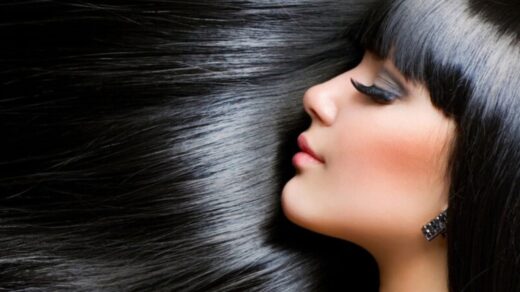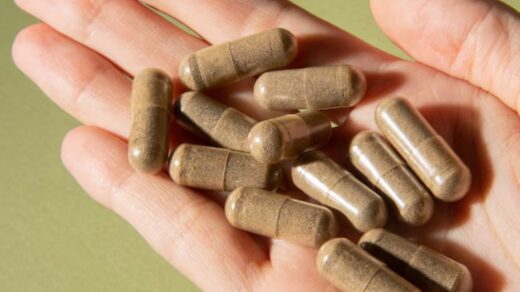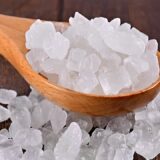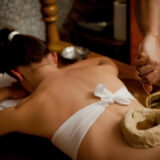Ayurvedic Massage Oils: Uses & Tips for Each Constitution Type
Traditionally, massage is seen as a cosmetic and health treatment, typically recommended in 10- or 14-day courses several times a year. In contrast, in India and other Eastern countries, oil massage (abhyanga) is a natural part of daily self-care, alongside everyday hygiene practices like washing or brushing teeth.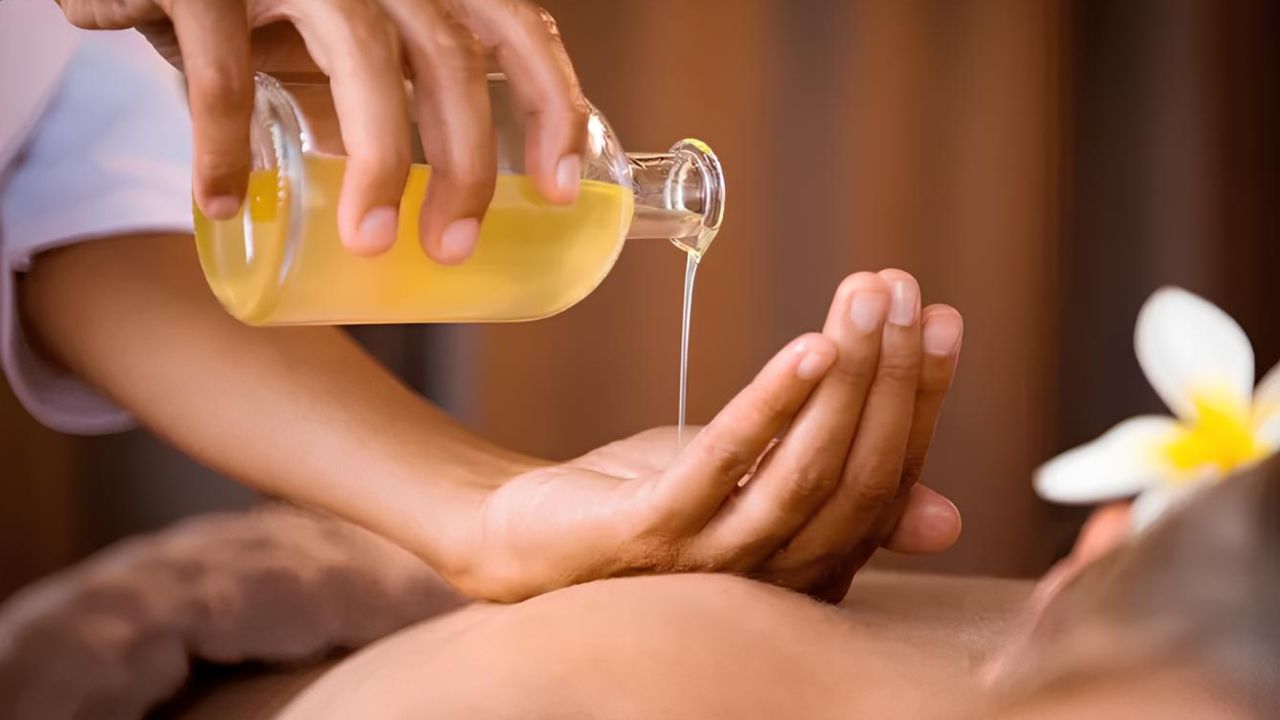
According to Ayurveda, regular massages and self-massages with the right oils offer profound benefits for both physical and mental health. They promote skin health, improve internal organ function, support muscle and bone tissue, relieve tension and fatigue, and slow the aging process.
Ayurvedic massage blends vegetable and animal oils with herbs, medicinal plants, essential oils, and spices, which are carefully chosen based on the season, the individual’s constitution, and overall health. Abhyanga can be done under the guidance of an Ayurvedic practitioner, who will select the right oil blend for you, with a massage performed by trained therapists.
Alternatively, it can be done at home, though it’s advisable to consult a doctor first to ensure the correct oils are chosen and to learn proper abhyanga techniques. If you can’t commit to a full-body massage every day, at least spend a few minutes massaging the head, ears, and feet. Ayurveda recommends doing this self-massage in the morning before showering for maximum benefit.
Oils for Vata Constitution Representatives
1 Mahanaryan oil
Mahanaryan oil is a popular and highly effective remedy for preventing and treating conditions caused by Vata dosha imbalance, such as arthritis, rheumatism, paralysis, circulatory issues, muscle pain, scoliosis, and skin disorders.
This oil contains over 30 natural ingredients and medicinal herbs, providing a warming and moisturizing effect, which is especially beneficial for dry and cold Vata types.
If you prefer to create your own massage oil at home, it’s important to choose a carrier oil first. A good carrier oil not only promotes healing but also helps to deliver the beneficial properties of other added ingredients, such as herbs, spices, or essential oils.
2. Carrier Oils for Vata Imbalance Massage Compositions
Many vegetable oils work well for Vata, especially those with warming properties. These oils can be used both externally and internally for enhanced benefits.
1. Avocado Oil: Sweet in nature, avocado oil offers a soft warming effect. It restores tissues, nourishes dry skin, and supports liver health due to its rich vitamin E content.
2. Castor Oil: With a thick consistency and sweet taste, castor oil provides a warming effect. It’s effective for muscle pain, spasms, and lymphatic circulation. When used internally, it acts as a natural laxative.
3. Flaxseed Oil: Known for its hot nature, flaxseed oil moisturizes skin tissues, alleviates constipation, and is rich in essential fatty acids. It can be used both externally and internally.
4. Peanut Oil: Peanut oil, with its rich, sweet aroma, deeply moisturizes the tissues and strengthens the body overall. It retains its fragrance even when mixed with essential oils, making it a pleasant choice for massage.
5. Sesame Oil: With a soft warming effect, sesame oil nourishes and deeply moisturizes dry Vata skin. It also protects the skin from environmental damage and is rich in vitamins, minerals, and essential fatty acids.
These oils can be used individually or combined to create a tailored massage oil blend, providing significant relief and balance for Vata imbalances.
Oils for Pitta Constitution Representatives
1. Dashamul Oil
Dashamul oil is a popular Ayurvedic massage oil blend that contains the roots of nine plants, offering a general strengthening and healing effect on the entire body.
It is effective for balancing all three doshas but is particularly beneficial for those with a Pitta constitution. Dashamul oil is used to prevent and treat cardiovascular diseases.
Besides this, it also detoxifies the body, cleanses blood vessels, improves metabolism, and enhances the functioning of the kidneys, liver, pancreas, and thyroid.
It also has a relaxing effect, making it ideal for those dealing with stress, neuroses, or increased irritability.
2. Carrier Oils for Pitta Imbalance Massage Compositions
For the hot, fiery Pitta constitution, oils with cooling properties are best. These oils help calm the heat within the body, offering relief to Pitta types.
1.Coconut Oil: Known for its cooling properties, coconut oil is especially beneficial for Pitta during the summer, as it reflects the sun’s rays. It hydrates the skin and is highly effective for treating inflammatory skin conditions and infections. Authentic coconut oil has a soft, sweet, and neutral scent.
2. Olive Oil: Olive oil has a sweet taste and a robust aroma. It serves as a powerful remedy for gallstone disease and is a natural antiseptic. Olive oil helps relieve joint pain and is regarded as one of the best medicinal oils for overall health.
3. Sunflower Oil: Sweet in taste, sunflower oil has a cooling nature and provides deep moisturizing and nourishing effects. It is particularly useful for treating rashes and skin infections, making it a great choice for those with Pitta imbalances.
4. Sandalwood Oil: Sandalwood oil has a calming, soothing aroma and is considered sattvic in nature, promoting mental clarity. It has antibacterial and antiseptic properties and is effective for treating skin conditions, colds, inflammation of the urinary system, insomnia, and neuroses.
These oils can be used individually or blended together to create a cooling, healing massage oil specifically tailored for Pitta imbalances.
Oils for Kapha Constitution Representatives
1. Bala Ashwagandha Oil
Bala Ashwagandha oil is a powerful Ayurvedic blend made from two plants: Bala and Ashwagandha. This oil enhances muscle tone, and energy levels, and has a tonic effect, making it highly effective for Kapha imbalances.
It improves metabolism, blood circulation, anabolic processes, and tissue regeneration, and helps slow down the aging process.
Bala Ashwagandha oil is used to treat swelling, rheumatism, arthritis, muscle and ligament pain, and excess mucus in the lungs and bronchi. It’s particularly beneficial for children and the elderly.
2. Carrier Oils for Kapha Imbalance Massage Compositions
For Kapha’s cold and damp nature, oils that are warming and slightly drying are ideal. These oils help stimulate circulation and reduce the excess moisture typical of Kapha imbalances.
1. Rapeseed Oil: Derived from the mustard family, rapeseed oil has a hot, fiery nature. It provides a warming and toning effect, making it excellent for Kapha imbalances, as it helps to stimulate circulation and balance fluid retention.
2. Corn Oil: Corn oil has a diuretic effect, deeply warming the tissues and organs. It is particularly useful for reducing swelling, and congestion in the lymphatic system, and clearing excess mucus from the body.
3. Mustard Oil: Mustard oil is pungent and warming. It stimulates the removal of excess mucus, fluid, and lymph from the body, making it ideal for treating respiratory issues, particularly in the lungs and bronchi, as well as abdominal pain.
4. Safflower Oil: With a warm nature and sharp taste, safflower oil is used for hormonal and reproductive system imbalances. It improves blood circulation and is suitable for normal skin types.
5. Soybean Oil: Soybean oil is particularly beneficial for oily skin, as it slightly dries the skin and has an astringent effect. Rich in vitamins A and E, it helps restore the skin’s natural elasticity, radiance, and youthfulness.
6. Almond Oil: Sweet almond oil is commonly used as a base for massage blends due to its soft, sweet aroma and warming effect. It nourishes the skin and improves its texture. Note that only sweet almond oil should be used for massages, as bitter almond oil can be harmful to the skin.
These oils can be used individually or combined to create a warming, toning massage oil that balances Kapha’s damp, cold qualities.
Universal Oils That Balance All Three Doshas: Vata, Pitta, and Kapha
1. Aloe Oil
Aloe oil is renowned for its unique healing properties and can be used both internally and externally. If you can’t find it ready-made, you can create it at home by soaking finely chopped aloe slices in a vegetable oil suitable for your body type and allowing it to infuse for 1-2 months.
2. Apricot Kernel Oil
Apricot kernel oil has a sweet taste, a gentle warming effect, and a soft, pleasant aroma. It helps restore the skin’s natural radiance and smoothness, leaving it feeling velvety. This oil is also effective in treating infections and constipation.
3. Hazelnut Oil
Ideal for dry skin prone to irritation, hazelnut oil has a mild warming effect and deeply nourishes tissues. Its rich, nutty fragrance adds to its appeal, making it a soothing and moisturizing choice for the body.
4. Jojoba Oil
Jojoba oil is available in both refined and unrefined forms. In its purified form, it has a neutral smell, while the unrefined version carries a rich nutty scent. It is beneficial for treating inflammation and offers protection from the sun’s rays and environmental damage. Jojoba oil is also great for hair care and is packed with essential vitamins and minerals.
5. Evening Primrose Oil
Evening primrose oil is a unique and expensive oil that is commonly used for internal use, but can also be used externally when blended with other oils. It supports immune health and is recommended for pregnant women and for treating reproductive and hormonal system disorders.
6. Wheat Germ Oil
Wheat germ oil is another valuable yet costly oil, often used in combination with other oils. It is highly effective in cleansing tissues and eliminating toxins from the body, making it a potent detoxifying agent.
These universal oils are versatile and can be used to balance all three doshas, promoting overall well-being and harmony within the body.
FAQs
Q1: What is the role of Ayurvedic oils in balancing the doshas?
Ayurvedic oils balance the three doshas (Vata, Pitta, Kapha) by addressing their specific qualities—warming for Vata, cooling for Pitta, and stimulating for Kapha.
Q2: Can I create my own Ayurvedic massage oil at home?
Yes, you can create your own Ayurvedic oil by infusing a carrier oil (like sesame or coconut) with herbs or essential oils that suit your dosha.
Q3: How often should I perform self-massage (Abhyanga)?
Ideally, daily or at least several times a week, preferably in the morning before a shower.
Q4: What are the benefits of using oils like Mahanaryan or Dashamul for specific doshas?
Mahanaryan oil helps Vata imbalances, while Dashamul oil is ideal for Pitta, addressing joint pain, skin issues, and stress.
Q5: Can Ayurvedic oils be used on all skin types?
Yes, but choose oils according to your skin type: warming oils for dry skin (Vata), lighter oils for oily skin (Kapha), and cooling oils for sensitive skin (Pitta).
Q6: How long should I leave the oil on after a massage?
Leave the oil on for about 10 minutes to absorb before washing off with a warm or cool shower.
Q7: Are there any precautions when using Ayurvedic oils?
Consult an Ayurvedic practitioner if needed, use high-quality oils, and patch-test for allergies or sensitivities.
Q8: Can Ayurvedic oils help with stress and anxiety?
Yes, oils like lavender and sandalwood can calm the mind, reduce stress, and promote relaxation.
Q9: Can Ayurvedic oils be used for hair care?
Yes, oils like coconut and sesame nourish the scalp, strengthen hair, and promote healthy growth.
Q10: How do I choose the right Ayurvedic oil for my dosha?
Choose warming oils for Vata, cooling oils for Pitta, and stimulating oils for Kapha based on your body’s needs.
By selecting the right oils and applying them regularly through practices like Abhyanga (self-massage), you can experience a range of benefits, from improved skin health and detoxification to enhanced energy and stress relief.
Resources:
- Scholar Research Library Antimicrobial properties of natural Ayurvedic massage oils from Kerala, the land of spices in India(1)
- A Case Study of Furunculosis following an Ayurvedic Oil Massage, Sudation Therapy, and Lessons to Learn(2)
- Pilot study investigating the effects of Ayurvedic Abhyanga massage on subjective stress experience(3)


